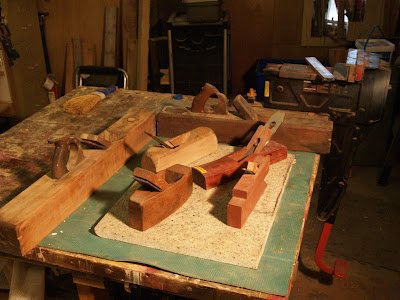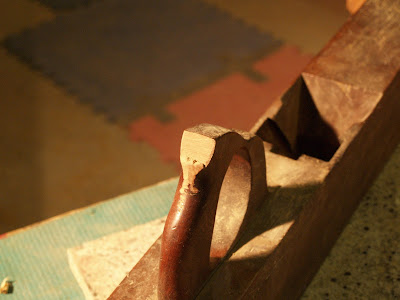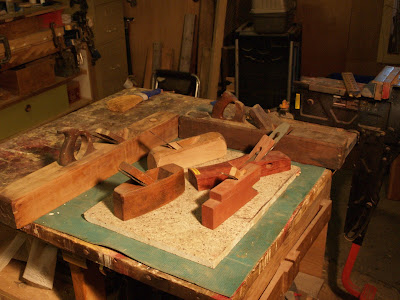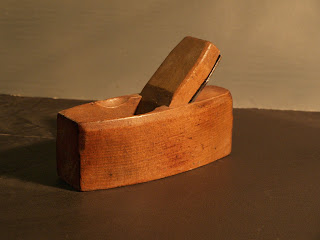I don't do 'how to' blogs, mostly because there are many ways to do things and my way is not any better than your way. Last time I wrote about the Flex cut whittling knife and I thought this time I would do a blog about basic whittling tools.
The Project - Easy spreading knife
I have made many of this style knife, they are sturdy and easy to make. Poplar is straight grained, harder and so more robust than basswood. Wooden knives, like wooded cutting boards should not be put in the dish washer, ever. I picked a piece of poplar from the 'off cut' bin and laid out the basic shape.
You can see the blade runs the length on one side. Doing this makes it easier to cut out the its shape with basic hand tools. You don't need a band saw, just a decent hand saw. This designs also means you don't have to worry about getting the blade in the centre of the handle. Rounding the end and where the blade joins the handle can be done with your knives, or a rasp.
The knife was deeper than needed and again a quick rip with any available saw brings it to size. If you were a hard core hand tool user an axe or draw knife would work just as well.
Basic clunking shape before bringing carving tools into the game. I generally make my spreader knives sturdy because I use them for more than pretty pate and soft cheese.
The blade carved until thin and the handle is tapered and thinned quite a bit. For me the carving process is about shaping and on the fly design. As a rule my handles are larger than average, it makes them more comfortable for old, stiff hands to hold.
The knife filled a spare hour yesterday morning, including posing and photography. After the blank was roughed out I used only two tools.
511 and 120
This knife was roughed with the red handled shop/hunting knife and finished with the wooden handled carving knife. The wooden handled knife wasn't necessary but its finer blade and slightly smaller handle makes it easier for me to do really fine work. I didn't even need sand paper to finish this project.
All wood carving requires very sharp tools, regardless of what brand or whence they come. In this case both knives are Mora kniv from Sweden. Both very reasonably priced, the red handled knife was $7.50 CDN when I bought it a few years ago. I don't remember the price of the small knife, I've had it for years. The only thing special about these knives is they are easy to sharpen, and stay sharp with basic stropping.
It is easy and fun to get caught up in "stuff" for a while. Getting older I am wearying of stuff, storing,sorting and caring for my stuff is wearing me down. The honour(?) of having so much stuff is growing pale, doing things is more fun that having stuff I think.
So...get into your shop, or studio and do things.
cheers, ianw




































